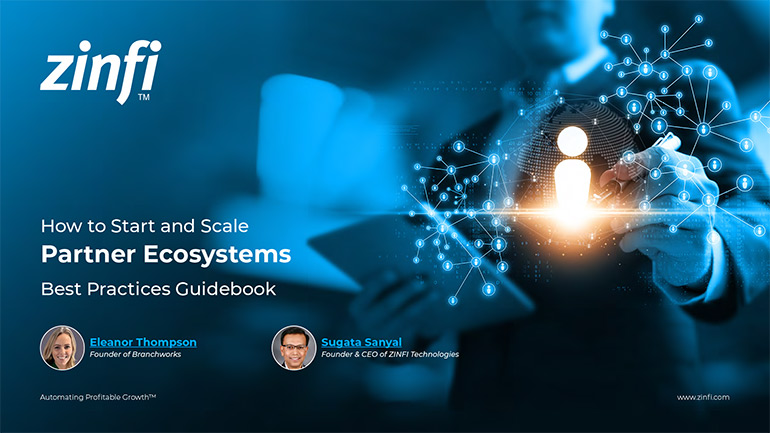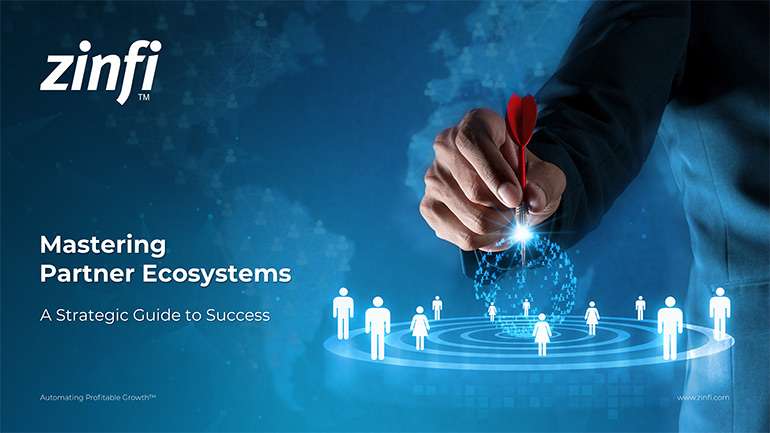Best Practices Articles

Building a Run Rate Channel Sales Motion
Building a run rate motion in a direct sales business is tough enough, requiring that you rigorously streamline your marketing and sales engine. But it’s even tougher when you are selling in a channel environment, which adds new layers of complexity. How can you create a predictable channel sales motion? It’s not easy, but it can certainly be done. Just remember that building a channel is not for the faint of heart. If you are not fully committed, then the chances that you can successfully establish a run rate channel sales motion are slim at best. So, I’ll begin this exploration with an assumption: that your organization is fully committed to building a channel, and you are prepared to do everything you can to streamline your channel sales business and achieve a more linear and predictable sales motion.
There are two primary categories of channel sales: transactions that happen every day, and transactions that are seasonal. With seasonal transactions—e.g., selling Christmas lights for Christmas trees—it is impossible to build a run rate for the obvious reason that sales are necessarily tied to a specific time period. However, if you are a light bulb manufacturer, then you can streamline your sales to some extent by building a mix of products that sell every day. In this article, then, I will focus on how to build a run rate business for non-seasonal products that are sold every day.
The key factor in building a run rate business is to follow two successive paths or phases, although at some point you will pursue both simultaneously. The first phase focuses on extending reach. The second phase focuses on expanding capability. Let’s explore these phases in sequential order:
-
Phase 1: Extending Reach to Build a Ramp
When you are building your channel and channel sales motion, until and unless you have established a partnership with an organization that can bundle your products and solutions or market to a very large installed base of clients, you will probably have to build an extensive network of resellers or agents to drive your channel sales. For the sake of our discussion here, we will call these reseller entities channel partners. At this early stage, it’s essential to understand the marketing and sales abilities of each of these entities before you can predict your channel sales. Basically, you are evaluating the consumption capacity of each channel partner.A channel partner typically serves an area or a region, and the partner’s ability to sell in that region is a fundamental requirement for channel sales. Each partner has a certain number of customers who have a need for your products and solutions. To build a run rate business, you need to create a simple model that calculates the size of this installed base of clients who have a potential interest in procuring your products over a specific period of time, and the percentage that are likely convert to successful sales. You will also need to calculate the percentage of the client base that is not likely to buy. This is a model of consumption capacity, and it is essential to have an accurate understanding of a partner’s consumption capacity in order to build a run rate model for that partner.
Once you have figured out a specific partner’s consumption capacity for channel sales, the next step is to determine how many partners you need to drive these transactions across a national or a global marketplace. You will also have to determine how long it takes for a channel partner to learn your solutions, put together a marketing plan, and build the sales and technical skills to sell successfully. This is what I will refer to as ramp time.
Of course, understanding the sales capacity of a typical channel partner and the ramp time they need to be able to sell is not enough. You will also need to create effective channel programs that will enable specific partners to drive channel sales. I won’t dive into that discussion now, but will explore the nature of such programs in a separate article.
-
Phase 2: Expanding Breadth to Build Ahead
Now that you have figured out your reach, and put together a marketing and sales motion to support your first wave of channel sales ramp, the next phase is to start thinking about what additional products and services you can provide—via your channel network—to the same installed base of buyers.Companies that build a run rate business are rarely content to enable their channel partners with a single product or service. Instead, they start creating a road map for a broad set of products and services. They do this by carefully assessing the marketplace and figuring out what else they can provide to the market to drive channel sales.
Taking this sequential approach—first building reach and then building breadth on top of that—is very important when you start to build a run rate business in channel sales. In short, your task is to estimate how many buyers a typical channel partner can serve, how long it will take for partners to learn the new business, what kind of programs are needed and what additional offerings can serve the market. These are the essential ingredients for establishing a run rate channel sales motion.
-
Phase 3: Mix and Match, but Focus for Success
Once an organization has built a run rate channel sales model and has diversified its product lines, it is essential to figure out where to invest more, who you should work closely with and which partners have the DNA to succeed as you move forward. Without this understanding you risk getting stuck in a “peanut butter” approach that will likely reduce return on your channel sales investment over time.The key at this stage is to look closely at partners that are outperforming the rest and figure out why they are selling more. Partner research, coupled with end-user segment research will yield insights about the core drivers for success in building a run rate channel sales model. When a partner is successful, their success can typically be attributed to a combination of multiple factors, including their marketing and sales ability, their ability to deliver post sales-engagement and support, their understanding of added products and solutions, and perhaps certain geographical advantages that allow them to dominate a market.
While it may seem a daunting task to figure out which partners to focus on, and then to manage the internal and external dynamics that accompany efforts to shift resources in order to optimize channel sales, don’t be intimidated. This last stage is absolutely essential to sustaining a run rate channels sales motion. In the long run, any organization that hopes to build a run rate business and establish a high level of predictability in their channel sales forecasts and results will need to have a thorough understanding of partner abilities and end-customer consumption patterns.
When you are starting to build a channel, it may seem too ambitious a goal to build predictable and repeatable channel sales, but it absolutely can be done if you are selling products and services that are unique and provide a profitable business proposition for channel partners. If your organization takes a systematic approach to understanding end user buying patterns, the DNA of successful partners and the kinds of channel marketing programs that will maximize channel sales, you will produce predictable, repeatable and profitable results, and your organization will live and thrive in the channel for years to come.
Best Practices Guidebook
 The Ultimate Guide to Partner Marketing Success Best Practices
The Ultimate Guide to Partner Marketing Success Best PracticesDownload Guide
 How to Start and Scale Partner Ecosystems Best Practices
How to Start and Scale Partner Ecosystems Best PracticesDownload Guide
 The Evolution of PartnerOps: Past, Present & Future Best Practices
The Evolution of PartnerOps: Past, Present & Future Best PracticesDownload Guide
 Mastering Channel Sales: Strategies, Best Practices, and Growth Tactics for 2025
Mastering Channel Sales: Strategies, Best Practices, and Growth Tactics for 2025Download Guide
 Winning with Partner Advisory Councils: Best Practices for Partner Engagement & Growth
Winning with Partner Advisory Councils: Best Practices for Partner Engagement & GrowthDownload Guide
 The Future of Partner Ecosystems Best Practices
The Future of Partner Ecosystems Best PracticesDownload Guide
 The AI Revolution: How Technology and Talent are Shaping the Future
The AI Revolution: How Technology and Talent are Shaping the FutureDownload Guide
 Top 105 Partner Management Metrics that Matter Best Practices
Top 105 Partner Management Metrics that Matter Best PracticesDownload Guide
 Mastering PRM Integration Best Practices
Mastering PRM Integration Best PracticesDownload Guide
 Building a Sales Partner Portal with Salesforce Best Practices
Building a Sales Partner Portal with Salesforce Best PracticesDownload Guide
 Building and Managing Partner Ecosystems Best Practices
Building and Managing Partner Ecosystems Best PracticesDownload Guide
 Mastering Co-Marketing and Co-Selling Best Practices
Mastering Co-Marketing and Co-Selling Best PracticesDownload Guide
 Transforming Partner Ecosystems Best Practices
Transforming Partner Ecosystems Best PracticesDownload Guide
 Mastering Partner Ecosystems Best Practices
Mastering Partner Ecosystems Best PracticesDownload Guide
 Mastering Partner Onboarding Best Practices
Mastering Partner Onboarding Best PracticesDownload Guide
 Partner Ecosystem Management Best Practices
Partner Ecosystem Management Best PracticesDownload Guide
 B2B Marketing in the Age of Intelligence Best Practices
B2B Marketing in the Age of Intelligence Best PracticesDownload Guide
 Multi-Partner Co-Selling Best Practices
Multi-Partner Co-Selling Best PracticesDownload Guide







